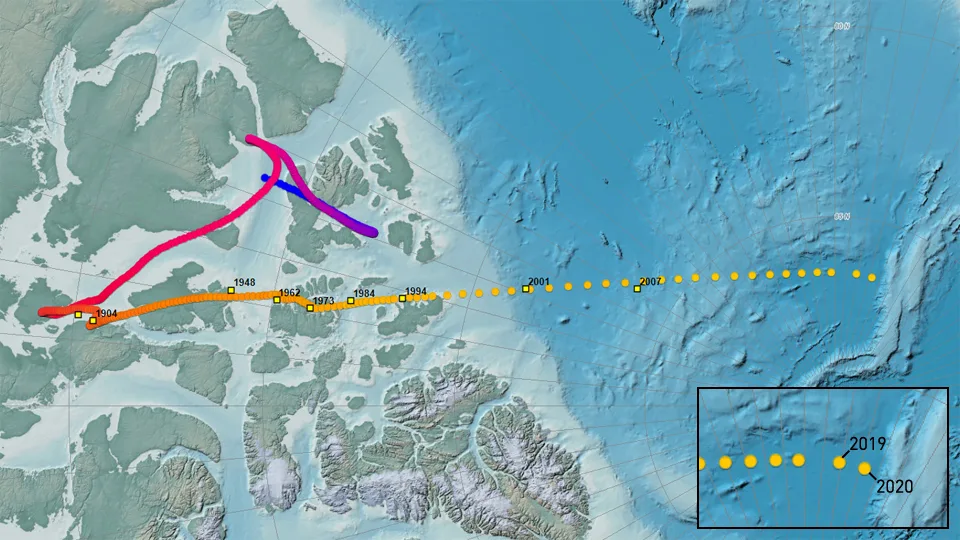
Magnetic North moving so quickly it's prompted a GPS update
Magnetic North is moving so quickly now, it prompted scientists to issue an unplanned, early update to the model we use to accurate navigate the world.
In these modern times, anyone using technology to navigate (whether at sea or in their local urban centre), to plot their location, to survey and map their surroundings, to manage air traffic, and any number of other tasks that rely on knowing exactly where you are, is making use of Earth's geomagnetic field to do it, through a detailed computer map known as the World Magnetic Model.
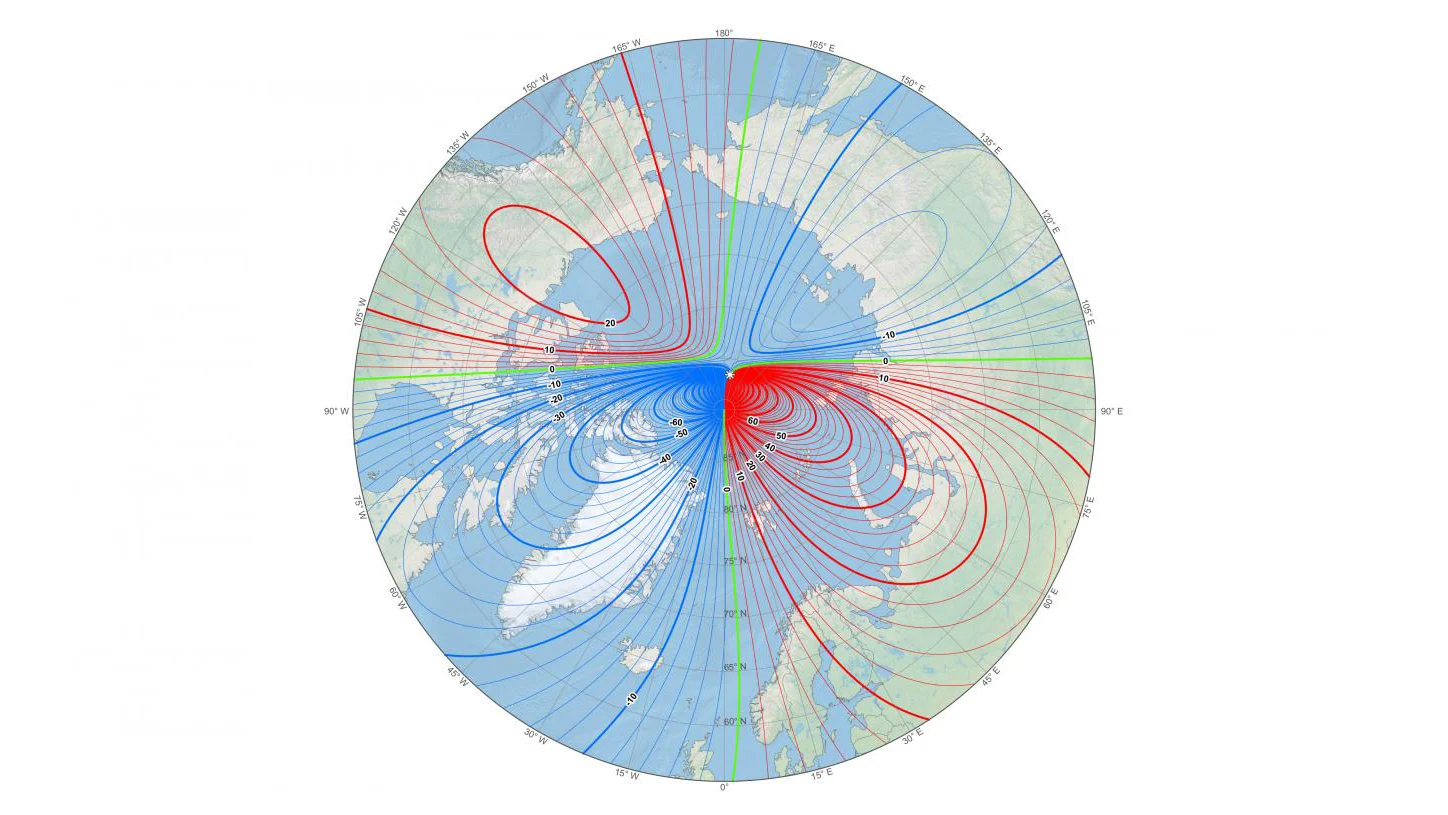
This map shows the location of the north magnetic pole (white star) and the magnetic declination (contour interval 2 degrees) at the beginning of 2019. Magnetic declination is the angle between magnetic north and true geographic north, as seen from any specific location on the planet's surface. Credit: NOAA NCEI/CIRES.
Typically, the World Magnetic Model (WMM) is updated every five years by the U.S. National Oceanic and Atmospheric Administration (NOAA). The last update was done in 2015, and the next update was not expected until 2020.
Due to what NOAA called "unplanned variations in the Arctic region", the agency has now released a new updated version of the WMM - WMM2015v2 - a full year earlier than expected.
According to NOAA:
This out-of-cycle update before next year's official release of WMM2020 will ensure safe navigation for military applications, commercial airlines, search and rescue operations, and others operating around the North Pole.
As shown below, the difference between the WMM2015 and WMM2015v2 position of Magnetic North for 2019, and for 2020 is significant.
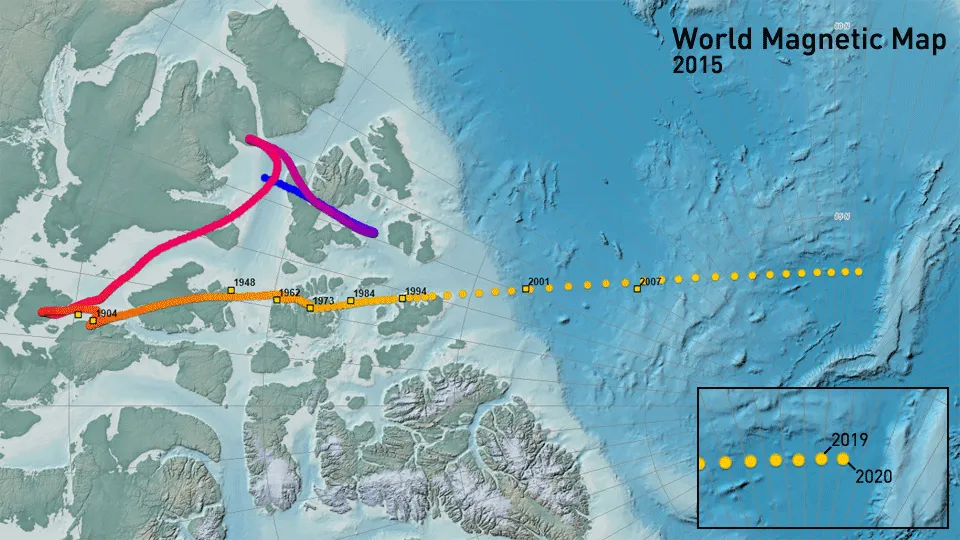
This animation flips between the old WMM2015 map and the updated WMM2015v2. Credit: NOAA NCEI/CIRES/Scott Sutherland
The original WMM2015 map is directly from NOAA's website, with the labelled insert added for clarity. The updated WMM2015v2 map is derived from the original, with the final two dots of the model plot adjusted to match Google Earth plotting of the updated Magnetic North positions for 2019 and 2020.
WHAT'S GOING ON HERE?
Earth's geomagnetic field is produced deep within the planet, by the movement of the material in the liquid outer core.
Both the solid inner core and the liquid outer core are composed mainly of a combination of iron and nickel. The inner core is compressed so much that it is solid, despite having a temperature of roughly 6,000°C. In the outer core, where temperatures are more like 4,500-5,500°C, the metals remain liquid and become ionized in the extreme heat, churning like the water in a boiling pot, with the hotter material closer to the solid core rising towards the surface and cooling, and the cooling material sinking back down towards the inner core. This convection, combined with the Coriolis effect produced by the rotation of the planet, causes the ionized metals (essentially charged particles) to produce electric fields, and the moving electric fields, in turn, produce magnetic fields.
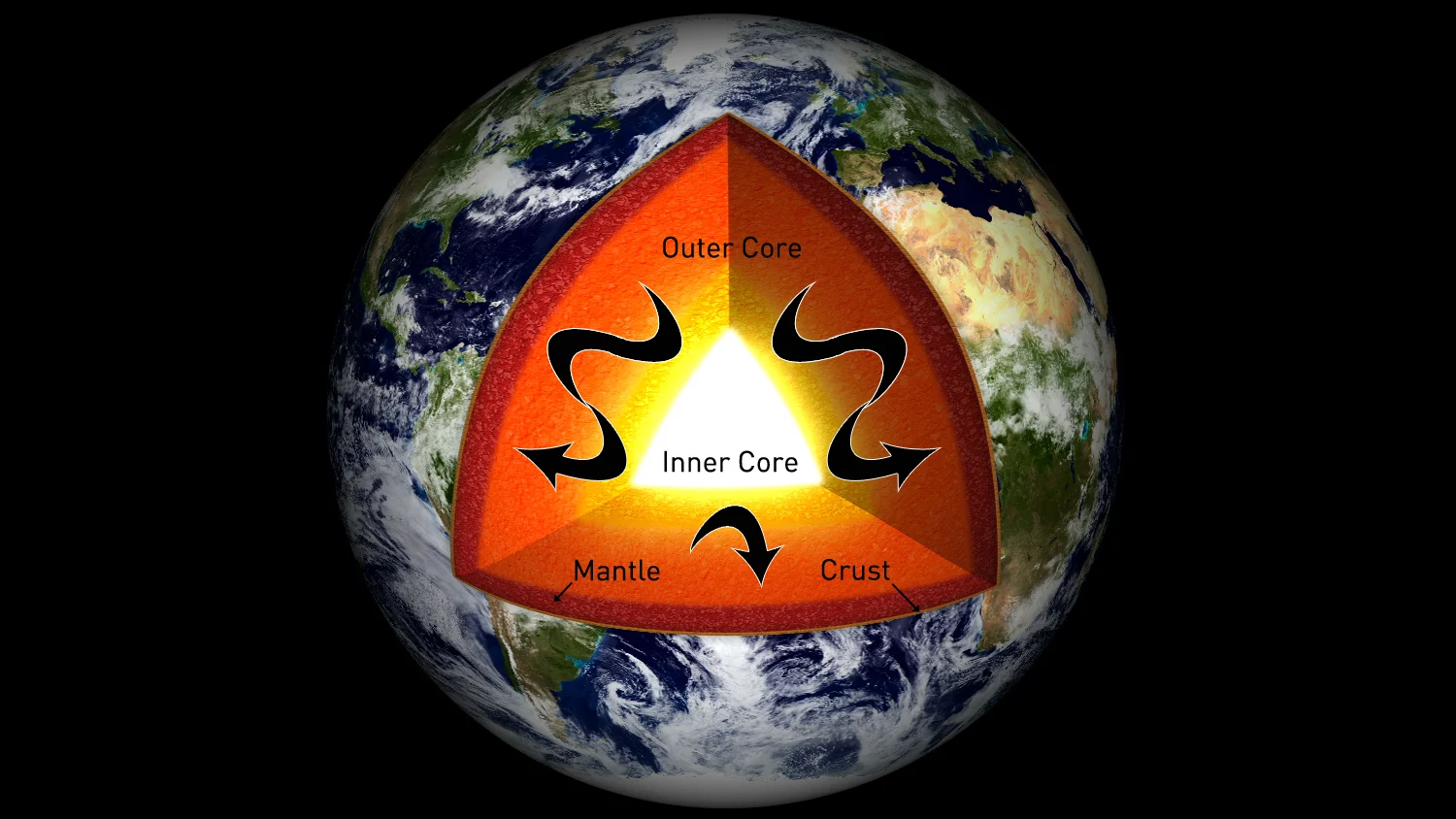
The different layers of Earth's interior, showing the circulations within the outer core. Credit: NASA GSVS/Scott Sutherland
Since the bulk of the material in the outer core is all circulating in the same general direction, the magnetic fields produced mostly point in the same direction, and thus our planetary magnetic field is produced, which stretches out beyond the Earth's surface, out to a distance of about 58,000 kilometres into space (well beyond the distance of the ring of geostationary weather and communications satellites).
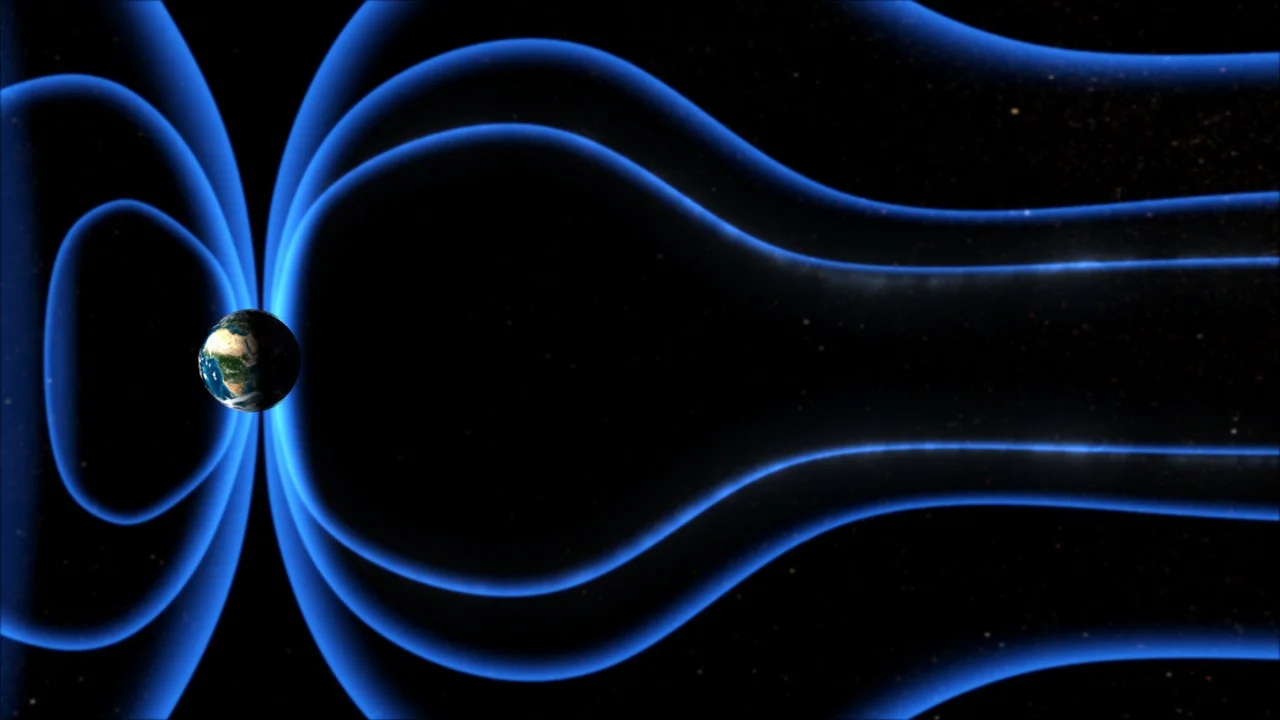
Earth's magnetic field surrounds the planet, stretching away from the direction of the Sun due to the solar wind. Credit: NASA
Because the outer core is liquid, however, there are always random, chaotic eddies and turbulence in the circulation of the material there. These random, small-scale changes, as well as influences from solar activity, the solar wind, and the changes in Earth's ionosphere as the atmosphere heats during the day and cools at night, cause the magnetic field to shift and change in response.
Sometimes these are temporary changes, and sometimes they are more long-term, and progressive, like the way the magnetic poles 'wander' in the Arctic and Antarctic.
WHAT DOES THIS MEAN?
At its core (if you'll pardon the pun), this is nothing to worry about.
In essence, while the movement of the magnetic poles is a very significant and important issue for those who manage how we navigate, orient ourselves in the world, and handle satellites and other technologies, in our day-to-day lives, this new, early update to the World Magnetic Map is of little concern for the average person.
Now, you may have heard of the term "pole flip" in the news, on social media, and in the blogosphere, especially when it comes to conspiracy theories and doomsday scenarios.
There is real science behind the idea that Earth's magnetic poles 'flip', every few hundred thousand years or so. Evidence for this shows up in places like the mid-Atlantic ridge, where magma wells up along the 'center-line' of the Atlantic Ocean, cools and solidifies, causing the Atlantic Ocean to spread wider. As it solidifies, this material becomes 'oriented' in a specific way, lining up with the direction the geomagnetic field was pointing at the time when it cooled. Now, if someone equipped with a sensor that could read this magnetic orientation sailed from the mid-Atlantic ridge either to the east or west, they would find that the needle of the sensor would flip back and forth, from north-pointing closest to the ridge, to south-pointing, back to north-pointing, and so on, the farther from the ridge they went.
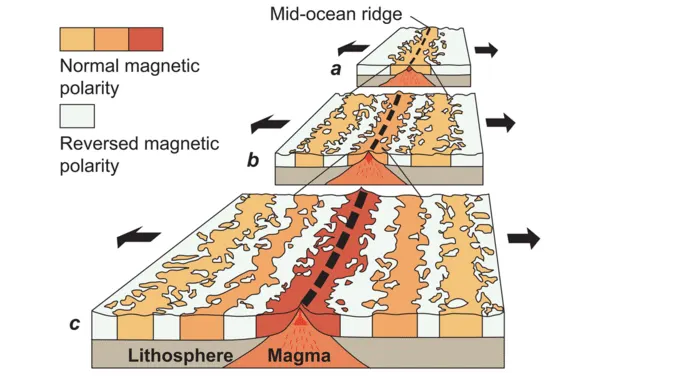
Magnetic polarity changes along the mid-Atlantic ridge. Credit: U.S. Geological Survey
Based on the width of the sea-floor bands, in extreme cases, it has taken some reversals less than 100 years to be completed, and some have lasted only around 200 years. On average, however, they happen on time scales of once every half a million years, and they take thousands of years to complete.
In the 'doomsday' scenarios, however, these magnetic reversals are portrayed as world-ending events, which are supposed to cause things such as the entire core of the planet flipping 180 degrees, resulting in Earth's crust turning on its side, all at once, and thus destroying everything on the surface (including us).
This will simply not happen, though!
By tracing these magnetic anomalies along the sea floor, scientists have round that, just in the past 83 million years, there have been a total of 183 pole reversals.
In that same 83 million years, however, we have not see any catastrophic changes in the Earth's surface. Looking at a map showing what Earth would have looked like, 90 million years ago, although there are significant differences, the individual continents are easily recognizable, and in roughly the same location that they are in today. This would simply not be the case if Earth's surface tilted on its side every time there was a magnetic polarity reversal.
This isn't to say that there would be no impact from such an event.
If Earth's magnetic field polarity were to flip within the next 100 years or so, it would present a variety of problems for our modern, technological society, and for the health and well-being of anyone living at the time (depending on where they lived).
Basically, when Earth's magnetic field 'flips', it isn't a sudden change of the overall magnetic field, so that all compasses will suddenly point south. It will be more of a weakening of the overall magnetic field, so that the smaller-scale magnetic fields produced by regions of the planet's mantle and crust would dominate. Based on a NASA model of what would happen, scientists believe that we would likely end up with three different magnetic axes - thus three north magnetic poles and three corresponding south magnetic poles.
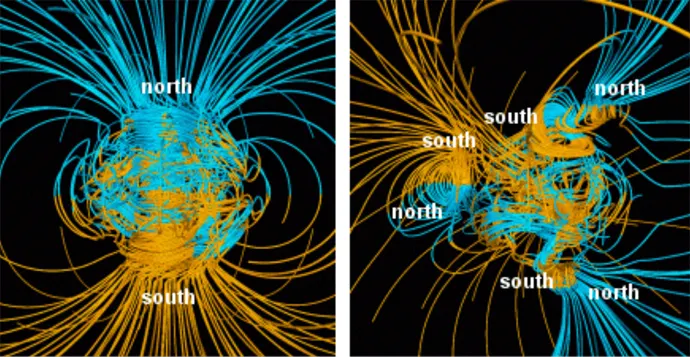
A supercomputer model of the current magnetic field (left) and what the field would look like when it is 'flipped'. Credit: NASA
According to NASA, depending on the exact configuration of the field(s) during a flip, most of the planet would still have a strong magnetic field, protecting against solar activity.
Some regions of the planet may receive less protection than others, which would mean greater exposure to solar radiation and cosmic ray particles. The field may not stretch out as far into space, or deliver as much protection there, so satellites and spacecraft in orbit would be at greater risk of experiencing anomalies and failures.
We would most likely experience significant impacts, but it would most definitely not be the end of the world.











